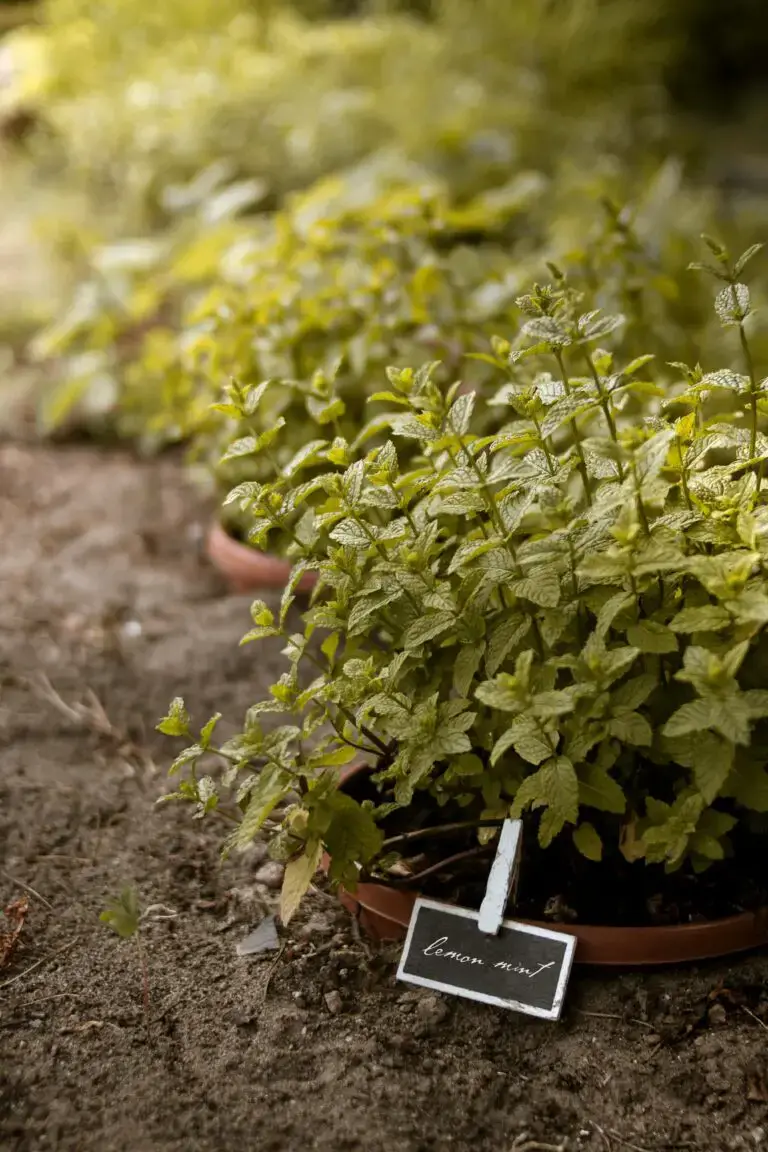Introduction to Sedum and Sunlight
Welcome to the sunny side of life, where sedum plants thrive under the golden rays! Sedum, a cherished member of the succulent family, exhibits a remarkable resilience and an unparalleled zeal for basking in full sun. These hardy plants are not your average backyard greenery; they are sculptures shaped by light, flaunting a versatile array of forms, textures, and blooms that brighten any corner of the garden.
Imagine a summer’s day, the air vibrant with warmth, as sedums stand tall, their fleshy leaves and stems soaking up every bit of sunlight. These succulents are like miniature sun worshippers, reveling in the spotlight, and for a good reason. Sunlight is like a magic elixir to sedum, fueling photosynthesis, which charges their growth and kindles the bright hues that make them stand out.
In the scope of gardening, understanding sunlight requirements for succulents is akin to mastering the art of plant care. It’s an elemental dance between plant and sun, crucial for sedums to unfurl their full potential. In the larger portrait of succulents, sedums are the ultimate sun-seekers, often more so than their kin, yearning for that full sun exposure that paints their world in vivacious colors.
But what does it mean for a sedum to flourish in full sun? It’s the difference between a lush, radiant cluster of foliage bursting with vitality and a lackluster specimen yearning for more light. In our journey through the vibrant world of sedums, let’s bask in the knowledge of how these sun-loving succulents thrive, setting the stage for a greener, brighter, and sunnier tomorrow.

Understanding Sedum’s Sun Requirements
Are you pondering over planting Sedum and find yourself in a sunshine conundrum? Worry not, as we dive into the radiant world of these succulents! Sedum, a group of leafy plants also known as stonecrop, are often praised for their hardiness and their ability to thrive in full sun. But what does “full sun” really mean for Sedum? Let’s unwrap the mystery.

Full sun generally translates to at least 6 hours of direct sunlight a day. Sedum plants are like solar panels, eagerly soaking up the rays to fuel their growth. However, just as with any plant, there’s a fine line between basking in a sunbath and getting sunburnt. Sedum plants come with an inherent sunscreen – their waxy, sometimes hairy leaves help protect against too much exposure. But in regions where the sun plays a tad too rough, especially during scorching summer highs, Sedum might raise their little leafy hands begging for mercy or a bit of shade.
On the flip side, too little sun, and you’ll witness your Sedum plants stretching out with spindly growth, reaching for any glimpse of light, a process known as ‘etiolation.’ It’s like watching someone lean over a fence to chat with their neighbor, only for Sedum, that neighbor is the sun, and the conversation is crucial for their well-being.
Real-life examples are key to grasping the importance of Sedum’s sun requirements. Picture a Sedum spectabile thriving in a rockery, its stout, chubby leaves gloriously pink against a backdrop of full, overhead sun. Or imagine a Sedum ‘Autumn Joy’ in a slightly shaded border, shyly unfurling its flower heads, less flamboyant in color but no less splendid. Both scenes illustrate Sedum’s adaptability but also underline the importance of that sun-plant harmony we’re aiming for.
The lesson here? Position your Sedum where they can revel in the morning sunlight and then enjoy a bit of afternoon shade, or vice versa. And if Mother Nature turns up the thermostat, give them a parasol in the form of light netting or a taller companion plant. Assess your conditions, listen to your Sedum’s leafy whisperings, and adjust accordingly, ensuring these sun-loving beauties remain just that – loving the sun without getting burned!
The Benefits of Full Sun for Sedum
Bathing in the glorious rays of the sun, sedum plants embrace the light with open arms—or should we say leaves? Full sun exposure isn’t just a preference for these resilient succulents; it’s a highway to horticultural happiness. Let’s bask in the warmth of the advantages that a sunny spot in your garden can provide to your sedum.
Sedum plants are like solar panels designed by Mother Nature, soaking up the sunlight to fuel their lush growth. In ideal conditions of full sun—which we’re talking at least six hours of direct beaming per day—sedums bursts with vitality. Imagine the thick, waxy leaves of a Sedum ‘Autumn Joy’, rich in color, and the upright stems standing tall as soldiers in ceremonial formation.
Now, think blooms – and sedum in full sun doesn’t shy away from putting on a floral show. Picture the star-shaped flowers of Sedum spurium ‘Dragon’s Blood’, igniting your garden with a fiery red spectacle. These flowers aren’t just eye-candy for you; they’re a bustling hub for the local bees and butterflies, setting your green space abuzz with life.
But it’s the health benefits that truly shine when sedum revels in full sun. Robust and resilient, these plants are less likely to succumb to the woes of fungal diseases that can lurk in the shadows. Sunlight is the best disinfectant after all, helping sedum maintain its famed hardiness. Interested in cultivating strong, healthy succulents? Full sun coupled with proper care paves the path to success.
Whether you’re cultivating the towering Sedum ‘Matrona’ or the ground-hugging Sedum acre, full sun is your ally in unleashing their true potential. It’s the difference between lackluster growth and a vibrant, life-affirming display of nature’s resilience. So let’s give our sedum what it craves and watch as they transform our gardens into sun-drenched sanctuaries of succulent bliss.

Best Practices for Planting Sedum in Full Sun
When it comes to soaking up the sun, sedum plants could easily be the supermodels of the succulent world. They don’t just tolerate a sunny spotlight; they bask in it, thriving in environments where other greens might throw in the trowel. But to make sure these hardy survivors continue to strut their stuff in your garden catwalk, a little backstage preparation goes a long way. Let’s talk soil, hydration, and plant personal space – the trifecta of perfect sedum showmanship in full sun!

Low Maintenance Soil: The Perfect Runway
Imagine this: Well-draining soil, lightly textured, rich in organic content yet not quite the diva in the soil world. That’s the dream foundation for your sedum. These plants aren’t too fussy, but they loathe wet feet – think of it as a model avoiding a puddle on the runway. A coarse, sandy soil mixed with compost will provide the drainage needed to prevent root rot while giving your plants the nutrients to grow vigorous and vibrant.
Watering: Quench but Don’t Drown
Sedum has this fantastic built-in water storage system – their plump leaves are like tiny reservoirs. This means they can go quite a while without a drink. Overwatering is essentially sending a flood down the runway. The trick is to water deeply but infrequently, allowing the soil to dry out between watering sessions. Picture giving them a refreshing gulp, not a never-ending gulp that overwhelms them.
Space to Shine: No Crowding the Catwalk
Like any star on the rise, sedum needs its space to shine – literally. Plant these sun-lovers about 6 to 18 inches apart, depending on the variety. It’s like spacing models on the runway; too close, and they’ll overshadow each other, too far, and the show loses its impact. Adequate space ensures good air circulation, which is crucial to prevent pest invasions and fungal diseases.
With these tips in mind, your sedum will have what it takes to make the full sun their stage, delivering a season-long performance of stunning foliage and blossoms. For more insights, explore “Unearthing the Resilience of Rock Gardens,” a journey through the captivating world where sedum makes its enchanting home amidst the stones.
Potential Risks of Sun Exposure and How to Mitigate Them
At first blush, sedum seems as if it could soak up infinite rays without a shrivel. It’s the sun-worshipping succulent that brightens our gardens with its versatility and hardiness. But even the mighty sedum has its limits. When the sun cranks up to its full, fiery potential, these plants can be left waving a white flag. Scorch ready leaves can crisp up like bacon in a skillet, leaving your sedum looking a little less lively and a lot more like a sunburnt tourist.
It’s not just about looks; that punishing UV light accelerates what I like to call ‘drought drama’—where sedum’s thirst goes unquenched. In their native rugged terrains, these succulents thrive in well-drained soil with occasional water, but when in the grueling grip of a heatwave, their soil dries faster than one can say “need water!” leaving roots gasping.
Nobody wants a garden of gloom, so how do we keep our sedum from turning into a crispy critter? First up, water wisely. Sedum’s soil should have a big drink early in the morning when the sun is a soft golden glow rather than a harsh overhead hazard. It’s like serving breakfast in bed—gentle and appreciated. And about that soil, make sure it’s the right type. Think gritty, not soggy; drainage is key.
Then there’s the shade game. A little bit of protection during the hottest parts of the day can make all the difference between vibrant and vanquished. Think of it like a parasol in plant form. You can go natural with strategically placed taller plants or even add some sun-savvy garden decor to cast a protective shadow. It’s like giving your sedum a pair of stylish sunglasses.
When intense summer sun is beating down like it’s got a point to prove, don’t hesitate to employ some clever shielding methods. Shade cloth, my friends, could become your best summer buddy—like a good beach umbrella, it lets light dapple through without letting the full force do damage.
Remember that video of sedum whisperers sharing their secrets? Follow their guidance: your sun-loving sedum can indeed bask happily in that golden light, but it’s all about balance. Get your timing right, just like you would with your own sun exposure, and you’ll have happy, healthy sedums that glow rather than wilt.
Armed with these sun-smart tactics, your sedum can thrive even when the sun is relentless. Keep in mind the local conditions, and be ready to adapt. Often, a plant’s needs can change from year to year or even within a season. Stay observant, and respond to your garden’s cues. With a bit of mindfulness and these protective strategies up your sleeve, your sedum will show its gratitude through a lush, radiant display that sings of summer without the sizzle.
Choosing the Right Sedum Species for Your Garden
If you’re looking to paint your garden with the vibrant textures of sedum, also known as stonecrop, you’ve probably asked yourself, “Should sedum be planted in full sun?” The answer isn’t one-size-fits-all—it’s a bit like denim, there’s a fit for everyone! Let’s dig into the various sedum species to find your garden’s perfect match.
The Sun-Lovers
Imagine a sunbather soaking up the rays—that’s your Sedum telephium (commonly called ‘Autumn Joy’). It thrives in full sun, reaching for the sky with lush, fleshy leaves and crowning blooms. Picture this: a sweltering summer day, your ‘Autumn Joy’ stands undeterred, its flowers a magnet for butterflies. It’s the stuff of gardeners’ dreams! Conversely, Sedum reflexum, sporting blue-green needles, yearns for those sun-soaked spots, transitioning to a stunning shade of gold as the sun intensifies.
Partial Sun Perfection
But what about those areas kissed by the sun for just a part of the day? Fear not, the adaptable Sedum spurium has you covered. Envision its crimson hues playing peek-a-boo with the sun, offering a spectacle that evolves with the day’s ebb and flow. Similarly, Sedum sieboldii sits pretty in partial sun, its round, blue-green leaves edged in pink, basking in the afternoon warmth.
The Shade Tolerant
Let’s not forsake the shaded nooks of your garden. Here, the resilient Sedum ternatum finds sanctuary, unbothered by the lack of direct sunlight. Even in these cooler corners, it unfurls its white blossoms in a display of defiance against the dim. It’s like having a little secret garden, an oasis where even sun-shy sedums can prosper.
Before you make your selection, consider this visual gem:
Now that you’re more acquainted with the diversity of sedum species and their sun preferences, take a moment to observe the dance of sunlight in your garden. Whether you’re working with the open embrace of full sun or the shady caress of a trellis, there’s a sedum waiting to anchor your landscape with its low-maintenance charm and drought-tough resilience. So go ahead, find your sun match, and watch your sedum garden grow into a tapestry of living color.
Sedum and Seasonal Sunlight Changes
Like a sunbather chasing the perfect tan, sedum plants crave those golden rays. But just as the sun seeker adjusts their position with the moving sun, the sedum requires a bit of savvy to make the most of the changing sunlight throughout the year. Let’s dive into how seasonal shifts in sunlight can mean the difference between a sedum that’s merely surviving and one that’s thriving.
Spring rolls in with a gentle touch; the sun lingers at a mild angle, casting a soft, diffused light that sedum plants welcome like a warm hug after the chilly winter. This is when your sedum is stretching out, waking up, and you might notice it’s not as demanding. It’s content with the moderate light as it prepares for the more intense summer rays.
As we hit the summer stride, the sunlight intensifies and stands boldly overhead. Your sedum isn’t just basking now; it’s in full-on photosynthesis party mode! This is peak growth time, and your sun-loving sedum’s foliage can turn vibrant shades that are the envy of the plant world. But watch out—too much of a good thing can lead to sunburn. Believe it or not, these hardy plants can get too much sun, so some afternoon shade wouldn’t go amiss, especially during heatwaves.
Enter autumn, and the light softens again, becoming more mellow and golden. Your sedum’s growth slows, and it starts to store energy for the winter. The temperate sunlight allows it to maintain health without the stress of the intense midsummer sun. This is the perfect time to ensure they’re in tip-top shape before the first frost.
Winter sunlight is a fickle friend—it’s weak and often hidden behind clouds. Your sedum may go dormant, but if you live in a milder climate and your sedum still sees some action, make sure it gets as much light as possible to keep it from stretching out in search of the sun, a process known as etiolation.
So what’s a sedum lover to do as the sunlight waltzes through the seasons? It’s simple: observe and adjust. Provide some shade in the scorching summer afternoons, move potted sedum to catch the low winter sun, or consider a protective cover during the harshest winter weather. Remember, the goal is to mimic the Goldilocks zone—not too hot, not too cold, but just right for your sedum to flourish.
For a visual understanding of how plants adapt to different light conditions throughout the seasons, check out this informative video which offers insights into plant growth and sunlight:
In summary, as the seasons turn, keep an eye on the sun’s trajectory and its effects on your sedum. This ever-changing dance with the sunlight is not just a survival tactic; it’s the natural rhythm that your sedum thrives on. Embrace it, and watch your sedum reward you with stunning growth and vibrant displays that track the passage of time through the sun’s ascent and descent in the sky.
Frequently Asked Questions
When it comes to cultivating the tough yet delightful sedum, sunshine is your best friend—but how much is too much? Let’s dig into some of the most common curiosities that garden enthusiasts have about these sun-loving succulents.
Can Sedum Thrive in Direct Sunlight?
Like an actor seeking the spotlight, sedum truly shines when bathed in full sun. These resilient plants are solar-powered superstars, relishing at least six hours of direct sunlight day. The sun fosters healthy growth, encouraging the leaves to develop their signature vibrant hues. Remember Martha’s garden? Her ‘Autumn Joy’ sedum was the talk of the town, beaming with hot pink blossoms that transitioned to a rich copper as autumn arrived—all thanks to ample sunlight.

What Happens If Sedum Doesn’t Get Enough Sun?
Shade may offer a cool respite for us, but for sedum, too much of it leads to the land of leggy plants. Insufficient light sends these guys into “stretch mode,” as they reach desperately for the sun, resulting in weak stems and sparse blooms. Picture a sedum sitting beneath a tree’s canopy—sparse and spindly, a shadow of its potential self. Adequate sunlight keeps them compact and in prime form.
Does Full Sun Affect Sedum Watering Needs?
One might think that a sun-drenched sedum requires a deluge of water to keep it from withering. However, these succulents are as low-maintenance as they come. Their plump leaves store water, rendering infrequent watering a part of their charm. In Steve’s sunny rock garden, his sedum collection thrives on the occasional drink, preferring to avoid the soggy feet that overwatering causes.
Are There Any Special Care Tips for Sedum in Full Sun?
While sedum is a proverbial sun worshipper, scorching conditions can still cause sunburn. On those blisteringly hot days, be it from a mid-summer heatwave or a reflective surface nearby, even sedum can use a little shade. A temporary sun screen or shifting to a location with afternoon dappled light, just like Laura’s cleverly positioned sedum by the white picket fence, can prevent any risk of overheating.
In essence, full sun is the secret ingredient to a thriving sedum garden. It encourages strong, vibrant growth, while too little sun or water can hinder its true potential. It’s the plant that beckons beginner gardeners and entices the experienced—it’s the sedum, the sun-loving gem of the succulent world.



